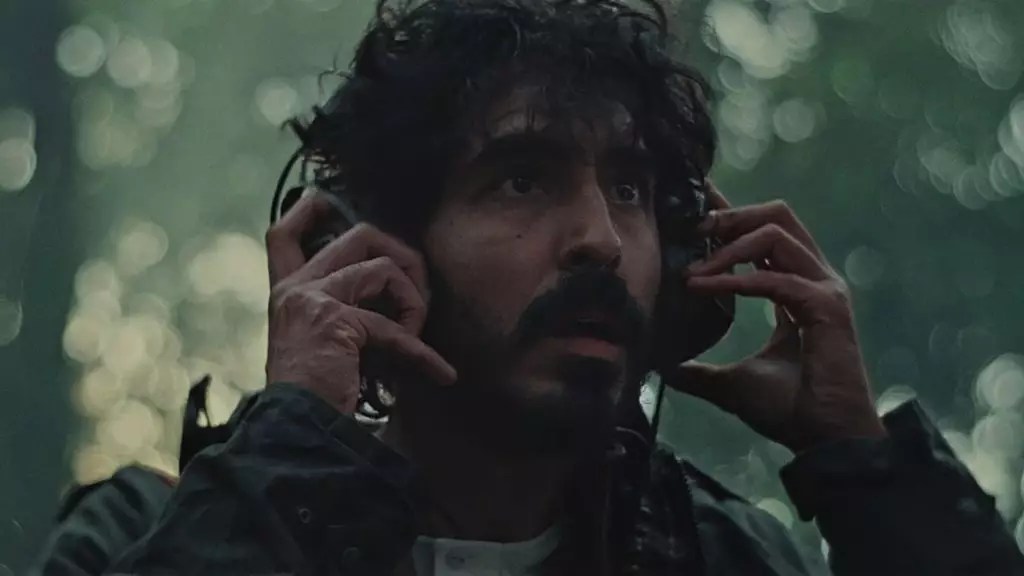In the realm of independent cinema, Bryn Chaney’s “Rabbit Trap” emerges as a striking debut that intricately weaves together elements of Celtic folklore and the profound impacts of sound. Set against the backdrop of the Welsh countryside in 1973, the film stars Dev Patel and Rosy McEwen as Darcy and Daphne, a famed musical duo seeking solace and inspiration in an isolated retreat. Yet, what begins as a peaceful endeavor to complete their next album quickly spirals into an exploration of ancient forces that resonate beyond human comprehension. Through this analysis, we delve into the multifaceted layers of the film, examining how sound serves not only as a medium for artistic expression but also as a conduit for unveiling hidden truths.
The Enchantment of Sound
At its core, “Rabbit Trap” fervently embraces the concept of sound as an integral narrative device. Darcy’s experimental recordings in the enchanting yet ominous woods set the initial stage for the film’s thematic exploration. The assertion that “sound is a ghost” encapsulates the unsettling yet beautifully haunting nature of the auditory experience. It signifies how sound can evoke memories, fears, and even unspoken connections between individuals. The filmmakers expertly capitalize on this concept, utilizing a rich tapestry of ambient sounds—from the gentle dripping of water to the eerie crunch of leaves underfoot—creating an immersive experience that transcends mere visuals. The audience is invited not just to witness the story but to feel it resonate within their very beings.
As Darcy’s sonic explorations bring to life ancient entities, the film introduces a layer of the supernatural that intertwines seamlessly with the couple’s artistic journey. This fusion culminates in Daphne’s euphoric creative breakthroughs, which are vividly depicted through a score by Lucrecia Dalt that dances between chaos and clarity. In one memorable scene, a moment of intimacy is set against ethereal fae music that immerses the viewer in a surrealistic dreamscape—a testament to how sound can elevate emotional experiences. This audial architecture serves as a parallel to the couple’s evolving relationship, inviting viewers to experience love as a dynamic interplay of light and shadow.
However, sound is not solely a vehicle for creativity and transcendence; it also surfaces as a means of confronting personal demons. Within the narrative, Darcy’s struggles with sleep paralysis symbolize a deeper turmoil—a battle against the shadows of his mind that threaten to consume him. As Daphne records his restless musings, the lines between wakefulness and nightmares begin to blur, lending voice to the fears he cannot confront while conscious. Here, Chaney masterfully juxtaposes the couple’s artistic highs with the despair lurking beneath the surface, illustrating how creativity can often be a double-edged sword.
The relationship between Darcy and Daphne reflects this profound complexity. Their bond, portrayed with emotional depth through the performances of Patel and McEwen, becomes a lifeline amidst the chaos. Yet, as Darcy’s darkness deepens, it risks dragging Daphne down with him. This tension encapsulates the struggles of many artistic partnerships where the brilliance of collaborative creativity can simultaneously be the source of significant personal trials. Chaney does not shy away from exploring this fragile dynamic, portraying it with authenticity that resonates universally.
An additional layer to this intricate narrative is introduced through the character of a nameless child, beautifully played by Jade Croot. This mysterious figure acts as a conduit between the couple and the folklore enveloping the Welsh landscape. His curiosity and knowledge of local legends serve not only to enlighten Darcy and Daphne but also to amplify the emotional stakes of the story. As their parental instincts awaken in response to the boy, a poignant sense of compassion emerges—an emotional evolution that contrasts sharply with the underlying dread that builds throughout the film.
Croot’s performance provides a catalyst that exposes deeper vulnerabilities within the protagonists, prompting them to confront their own traumas. The interplay between the three characters delicately reveals how trauma can shape relationships while intertwining themes of innocence, guidance, and the burdens of creativity. In doing so, Chaney encapsulates the push and pull of artistic journeys, where inspiration can stem from both joy and pain.
In “Rabbit Trap,” Bryn Chaney crafts a film that transcends traditional storytelling through an astute blend of sound, folklore, and emotional exploration. This ambitious debut reveals the often unseen interplay between the creative process and the shadows that chase the artist. By harnessing the power of sound as a narrative force, Chaney not only immerses viewers in an otherworldly atmosphere but also invites contemplation on the very nature of creativity. With powerful performances and evocative sound design, “Rabbit Trap” stands as a compelling testament to the complexities of artistic expression, promising a bright future for this rising auteur.


Leave a Reply